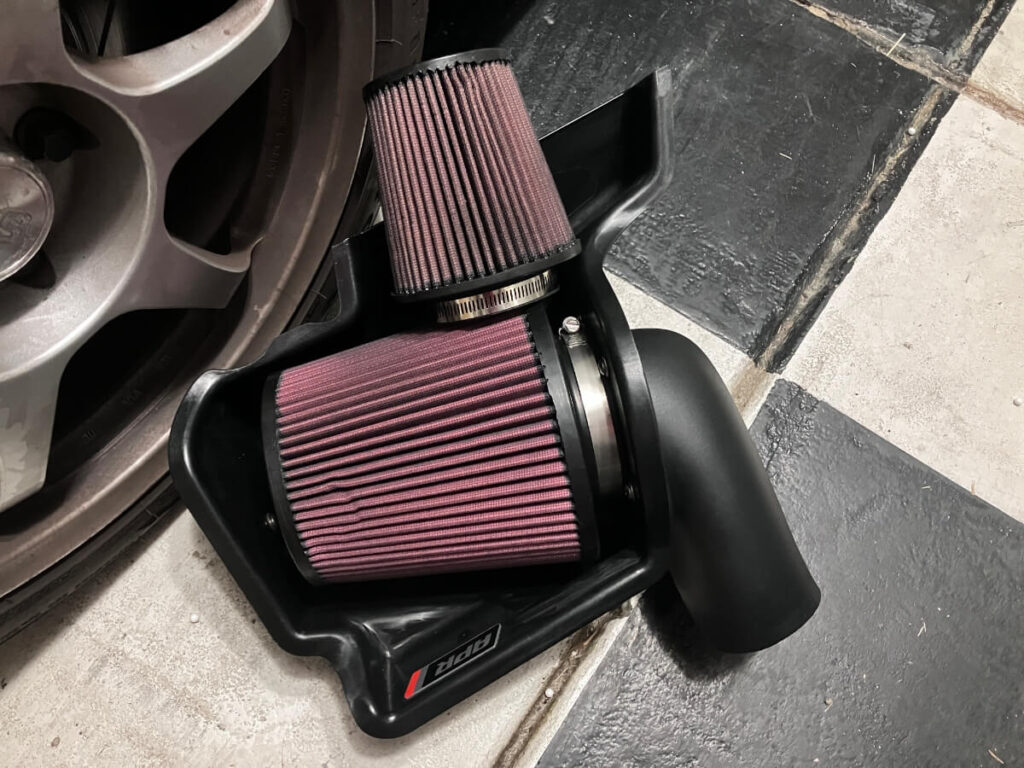Background:
A few months ago a fellow GTI owner (Lucas Huang – YouTube Channel) contacted me and offered their K&N Typhoon intake system for performing a flow test.

Being able to add another intake to the collection of intakes that have been tested sounded good so I took him up on the offer.
Here are the parts of the K&N Typhoon intake:

Test Procedure:
The intake is assembled and connected to a CTS Turbo version 1 inlet elbow. The CTS V1 flows higher than the Cast CTS V2 product that I recently tested and is comparable to some of the other “decent” performing inlet elbows that have been tested.
Next, the entire intake is attached to a PTS flow bench using an adapter that simulates the compressor inlet of an IHI IS20/IS38 turbocharger.
The flow bench pressure is increased to 28″ of H2O and then the flow rate through the intake is recorded.

Test Results:
The K&N Typhoon Intake flows 368 CFM & 28″ of H2O. This result is shown on the chart along with other intakes that have been tested using the IHI adapter.

Conclusions:
The K&N Typhoon intake for the Mk7 GTI was flow-tested using an IHI-size turbo adapter and found to flow 368 CFM @ 28″ of H2O.
This is the second lowest flow rate measured for an aftermarket intake and the lowest for an “open” style intake.
I did not investigate possible causes for the low flow rate, but comparing the K&N air filter with an APR PEX intake air filter I would put the filter size at the top of a list of potential causes.
The K&N filter looks like an oversized SAI filter next to the APR.

